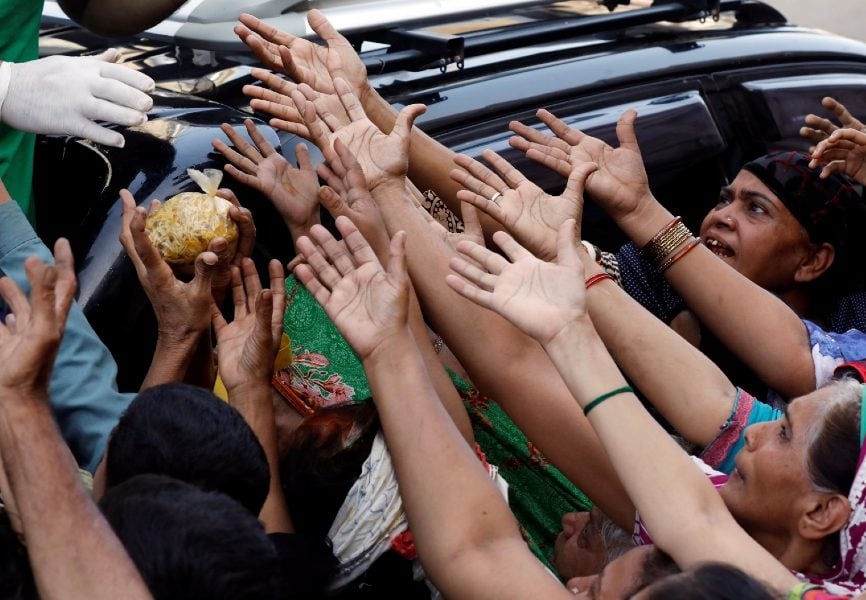Amid the mounting death toll from
Covid-19 and draconian lockdown measures put in place to contain the spread of the disease, the specter of food shortages is looming in some parts of the world. As Eurasia Group expert
Peter Mumford explains, one area of particular concern is South and Southeast Asia. Given its large population of low-income inhabitants, infrastructure deficiencies, and role as a food exporter to the rest of the world, the region has a history of social and political instability caused by shocks to its food supply.
The local impact
New strains are already visible in several countries. Pakistan, for example, was suffering food shortages before the pandemic caused by currency weakness, a locust blight, and government mismanagement. Scarcities of wheat and flour have intensified because of disruptions to supply chains during a coronavirus-driven lockdown and as a result of Sindh province banning the transport of wheat to Punjab. In India, rice, wheat, and some pulses have continued to make it to market, but with the extension of that country's lockdown until May, it could soon face shortages. Migrant laborers have either returned home or are unable to travel to farms to work because of restrictions on movement, and rural markets were initially closed down. Sri Lanka is already experiencing high food prices and the government is trying to boost domestic production of many items in case other countries restrict exports; the issue could become an important one in upcoming parliamentary elections. In the Philippines, farmers in a northern province that supplies 80% of the country's so-called highland vegetables recently dumped loads of their produce in protest against restrictions on movement of their cargo trucks.
Consequences for global export markets
South and Southeast Asia collectively supply over two-thirds of the world's rice exports; about 45% of high-starch/fiber root vegetables, tubers (excluding potatoes), and starches; and one-third of shrimp and other crustaceans. The more concerned countries in the region grow about their domestic supplies, the more likely they are to restrict shipments abroad, exacerbating scarcities elsewhere. India, the world's top rice exporter, has not put limitations in place, but traders stopped signing new contracts and offering quotes to overseas buyers for three weeks over fears that lockdown-induced labor shortages and logistics problems would prevent them from meeting delivery deadlines. In fourth-largest rice exporter Vietnam, uncertainty over whether new export restrictions could be imposed are holding back new sales agreements even though an earlier ban has been lifted. The government recently raised its April rice export quota from 400,000 to 500,000 tons, after widespread complaints of rice containers still stuck at ports. It will soon decide whether the same rice export quota will be allowed in May—this is likely, barring the sudden emergence of domestic shortages. Pakistan has banned the export of onions until 31 May, Cambodia is restricting some supplies of fish to neighboring countries, and Thailand has prohibited the export of eggs until at least the end of April. So far, there haven't been reports of other restrictions, and the expectation is that the disruption to rice exports will be short-lived.
Food geopolitics
The disruptions to food supplies are scrambling some bilateral relationships and regional cooperation agreements. At a time when the Philippines is negotiating a deal to guarantee a supply of rice from Vietnam, the former issued an unusually pointed statement on 8 April in support of the latter following the sinking of a Vietnamese fishing boat after a collision with a China Coast Guard vessel in waters claimed by both countries; Manila noted that: “Neither fish nor fictional historical claims are worth the fuse that's lit by such incidents.” Moreover, if food shortages develop in China, countries in South and (especially) Southeast Asia could come under pressure from Beijing to ramp up supplies to their giant northern neighbor. Possibly they already have. Vietnam's rice exports to China are reported to have surged by around 600% in the first two months of 2020. Similarly, rice production in the Mekong region (Vietnam, Thailand, Cambodia, Laos, and Myanmar) has been suffering from more frequent droughts, and their effects have been exacerbated by dams upriver in China. If food shortages develop in these countries, that could become a more potent issue of conflict.
Learn more:

 People reach for food aid in Karachi, Pakistan following a lockdown amid the coronavirus outbreak. REUTERS.
People reach for food aid in Karachi, Pakistan following a lockdown amid the coronavirus outbreak. REUTERS.
